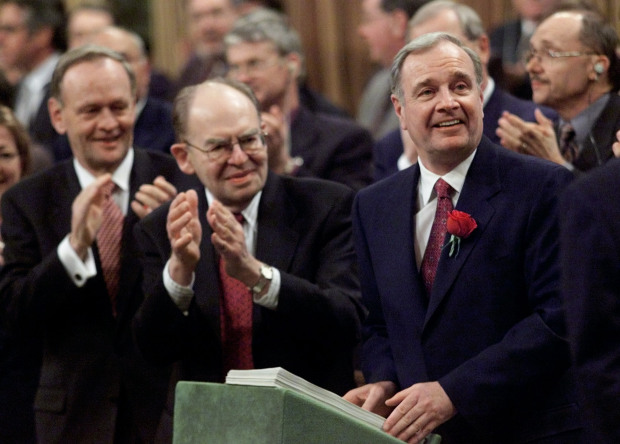I have a longer piece out in Jacobin today on tracing the roots of today’s austerity consensus in Canada to the 1990s. In a way, it’s me coming to terms with the last twenty years of Canadian political economy.
How exceptional is Prime Minister Stephen Harper and his crop of Canadian conservatives? For not just large- and small-l liberals, but also some leftists, the last decade has been an aberration — particularly compared to the alleged synthesis between responsible government and economic expansion that occurred during the 1990s. Yet while both public and elite consensus has shifted even further to the right since the ’90s, too often Harper and the current Conservatives are portrayed as an anomaly rather than a continuation.
The ultimate irony of the last two decades of austerity may be that Harper’s Conservatives have been able to rest comfortably on their laurels because of previous attacks on working-class power and livelihoods, even temporarily increasing public spending to save a system in crisis.
While the 1980s had laid some of the groundwork in Canada, the Right’s counterrevolution was not as successful as it had been under Ronald Reagan in the US or Margaret Thatcher in the UK. It was up to Canada’s Liberal Party, the centrist, “natural governing party,” to cement it.
In his 1994 budget speech, Paul Martin — then the finance minister, later the prime minister — encapsulated the Liberal message:
It is now time for government to get its fiscal house in order. For years, governments have been promising more than they can deliver, and delivering more than they can afford. That has to end. We are ending it . . . Over the next three years, for every one dollar raised in new revenues we will cut five dollars in government expenditures.
The subsequent austerity drive was one of the most severe in the Global North, and remains the foundation for the Right’s strategy of death by a thousand cuts.
Taking this longer view of the political economy of Canadian austerity — and the nature of Harper’s conservatism — isn’t just crucial to making sense of the present. It provides more stable ground to fight for a less austere future.
